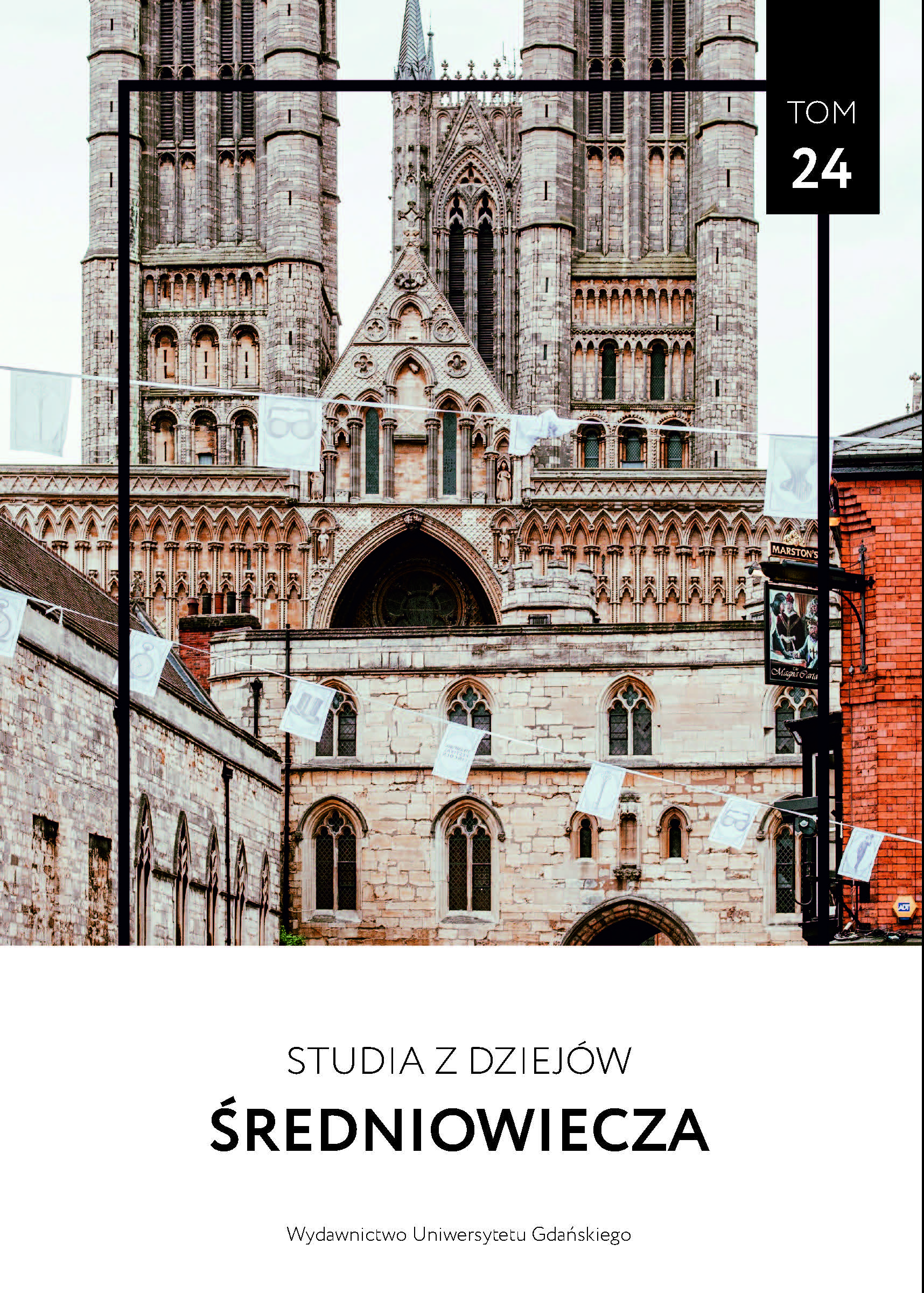O okolicznościach narodzin królewskich dzieci w świetle itinerarium Kazimierza Jagiellończyka i Elżbiety Rakuskiej
DOI:
https://doi.org/10.26881/sds.2020.24.06Słowa kluczowe:
family, Kazimierz Jagiellończyk, Elżbieta Rakuska, children, itinerary, conception and birthAbstrakt
On 10 February 1454, the Polish King, Kazimierz Jagiellończyk (born 1427) married Elżbieta Rakuska (born around 1436/1437), daughter of the German, Czech, and Hungarian king, Albrecht II Habsburg and Elizabeth of Luxemburg.
Kazimierz Jagiellończyk and Elżbieta had 13 children, 7 daughters (two of them – also called Elżbieta – died in early childhood and 6 sons. So, in total, 11 children survived into adulthood. The royal couple gave birth to children with a certain regularity, more or less every several months, especially in the first years of their marriage. It is well‑known that Elżbieta accompanied Kazimierz Jagiellończyk on his journeys for many years. Research has revealed the itineraries of the King and his wife. This article analyzes these itineraries with regard to the details of the journey and the place of conception of individual royal children. The analysis reveals that, especially in the first years of the marriage, King Kazimierz Jagiellończyk spent a lot of time journeying between different places. This was not just a consequence of the custom (common then) of royal progresses, but also of the military situation. Queen Elżbieta did not give up the company of her husband on his journeys, although she did not venture into areas directly affected by warfare. So it is not surprising that the first royal offspring – the future Czech and Hungarian King Władysław – saw the light of day in Wawel Castle, but he was conceived outside Kraków. Possibilities include Łuków, Kazimierz Dolny, Radom, Opoczno, or, finally, Piotrków.
Nor is it difficult to see that from the moment of the birth of their first‑born son to Elżbieta’s next pregnancy, the royal pair were practically never parted, leaving Kraków together, travelling and spending time in Lithuania. Their daughter Jadwiga was conceived during a winter stay in Lithuania, most likely in Wilno. The next children were also conceived during the couple’s long visits to Lithuania: Kazimierz in winter, and Jan Olbracht in spring. Most likely, their son Aleksander was conceived in Łęczyca. In turn Zofia was conceived in Breść Kujawski. It is difficult to fix the place where Elżbieta (1) was conceived; it happened while travelling, at the time of one of the couple’s brief stops in Kłodawa, Łęczyca, Piotrków, or Parczew. Zygmunt was conceived in Łęczyca, and Fryderyk in Kraków. He was the first but not the only one of the royal children to be conceived in Wawel Castle; his sisters Elżbieta (2) and Barbara were conceived there too. Anna, older than Barbara, was conceived somewhere en route between Lublin and Nowe Miasto Korczyn.
Like their eldest brother, the majority of the royal children were born in Wawel Castle. Exceptions were: Zygmunt, born in Kozienice (in this case, we know that this was a result of a search for a place safe from plague), Anna, born in Nieszawa (almost to the birth, the Queen accompanied her husband on his current journey), and Barbara, born in Sandomierz. The King was present at the following births: of Władysław, Jan Olbracht, Zofia, Elżbieta (1), Zygmunt, Fryderyk, Elżbieta (2), and Barbara. We know the dates of the christenings of several of the children: Władysław – 4 April 1456 (more than a month after his birth; his parents set off on a journey when he was almost two months old); Kazimierz – 5 November 1458 (more than a month after his birth; the christening waited till the King returned; the royal couple set off on a journey three months after his birth); Jan Olbracht – christened three days after his birth (30 December); Zofia – christened a week after being born (her parents set off on a journey five months after her birth). The King was certainly present at the christenings of Elżbieta (1) in June 1465 (a week after her birth), Zygmunt, Fryderyk (christened eleven days after being born), Elżbieta (2), and Barbara (eleven days elapsed between her birth and her christening).
If we look at the bates of birth of the children of Kazimierz Jagiellończyk and Elżbieta, we also see that in the first few years the gaps between a birth and a subsequent pregnancy were quite short. Between 1456 (the first birth) and 1461, pregnancies occurred at the following intervals: the second pregnancy was nine months from the first birth; the third pregnancy was five to five and a half months after the second; the fourth was around seven months after the third birth; and the fifth pregnancy came eleven to twelve months after the fourth birth. After the birth of a fifth child (Aleksander), there was a gap of more than two years before the Queen’s next pregnancy, a subsequent conception being in September 1463. From the birth of her sixth child to her seventh pregnancy there was an interval of four to five months; from the seventh birth to the eighth pregnancy there was an interval of around ten to eleven months; from the eighth birth to the ninth pregnancy, it was eight months. After this eighth birth (27 April 1468), it was three years before the Queen was pregnant again, this interval being most likely caused by illness (perhaps miscarriage). It was only around mid‑September 1471 that the Queen was pregnant again. After giving birth to her tenth child (20 April 1472), there was a gap of more than three years. The Queen only became pregnant again in June 1475. The child was born in March 1476, and a further conception took place more or less eighteen months later. We cannot discuss the date and place of conception of the royal daughter Elżbieta (3); we do not have annual data relating to the date of her birth.

 Uniwersyteckie Czasopisma Naukowe
Uniwersyteckie Czasopisma Naukowe





